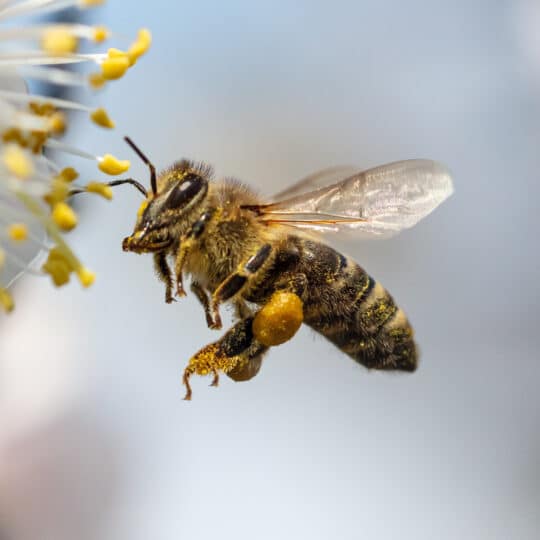The Buzz About Stinging Insects
Which Ones Help More Than Hurt

With gardens back in bloom, you may find more insects buzzing around your yard. While some stinging insects are dangerous and should be dealt with quickly others are beneficial to the environment and should be protected. So which are which?
Beneficial Bees
There are a few different species of bee and bee-like stinging insects that look similar but have different qualities that could either help save the world or be detrimental to your health. Let’s start with the helpful bees.
- Honey bees are at the top of the important insects list. These pollinators aid in the production of flowers, fruits and vegetable crops that we rely on for food. However, these bees are in danger of dying off from an increase of insecticides that kill their food source or poison them during their search for nectar. While honey bees aren’t aggressive and will only sting in self-defense, a sting can still be life-threatening to those allergic to the venom. Honey bees can only strike once since they lose their stingers in your skin.
- Bumble bees are larger and fuzzier than honey bees. They also help pollinate plants. Like honey bees, bumbles aren’t aggressive, but they will sting if threatened. In fact, these social bees live together in nests and can swarm if they feel their home is in danger. However, their stings are less potent and usually not life-threatening.
- Carpenter bees are another pollinator that live alone so there’s no worry about swarming. However, they tend to burrow in wood. This could be an issue for your siding, fencing, shed, trees and other wooden structures around your home. Female carpenter bees have stingers and will use them if they feel their nest is threatened.
The best way to deal with these helpful bees is to let them do their thing. Don’t be so quick to kill clover and dandelions in the early spring. This is what they’ll feed on before other plants have bloomed. Of course, you’ll want to help protect your wooden structures from carpenter bees, but you can provide them with their own bee habitat so everyone is happy. This way plants are pollinated, your home is protected, and there’s no reason for anyone to feel threatened.
Other Stinging Insects
There are some other stinging insects that are known to be more aggressive. These bee-like creatures can also serve as decent pollinators, but they’re more recognized for their ability to swarm and sting.
- Wasps are predatory insects that feed on other insects. Some are more social and live in colonies while others are solitary. Like bees, wasps will sting if they feel threatened. Their stings can be painful and may cause an allergic reaction.
- Yellow jackets are a type of wasp often found in urban areas. These social stinging insects live in colonies, so their swarms become even more aggressive when they’re threatened. Their painful stings can also be potentially life-threatening to those who are allergic.
- Hornets are another type of wasp, but they’re larger and more aggressive than the other species. They too are social insects with a powerful, potentially life-threatening sting. Plus, hornets can sting multiple times without dying.
While these insects are also pollinators, they pose a greater threat than their bee cousins. Since you’re more likely to come across these social pests in a local nest, it’s best not to try to eradicate them yourself. Remember, they strike when threatened.
If you find any type of stinging insect in or around your home, one of the smartest solutions is to call a local pest control company. A trained professional will evaluate the situation and plan a safe removal to help prevent unnecessary damage is done. Contact Cardinal Pest for more information on precautions you can take to save yourself from the sting of pest control.